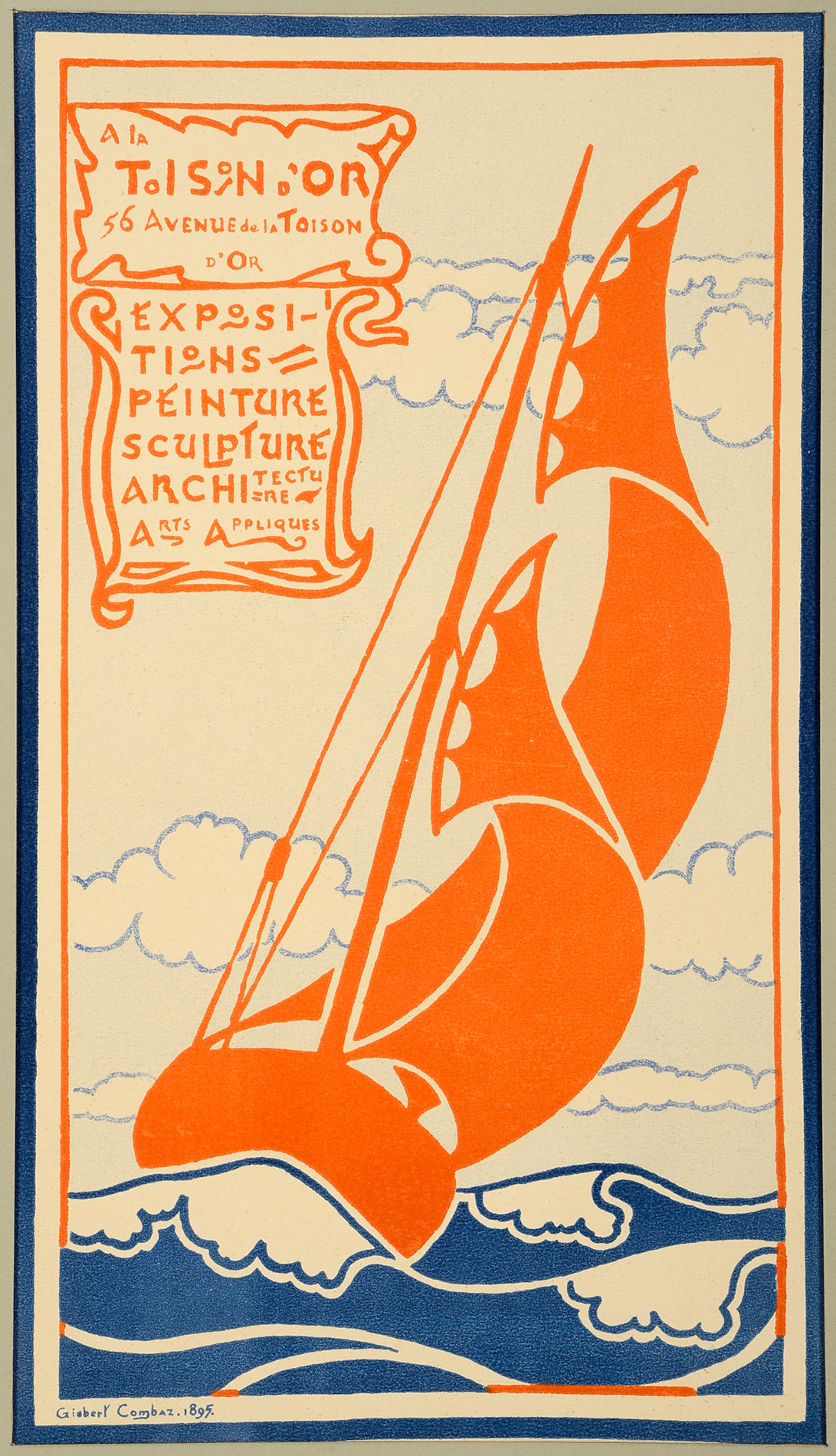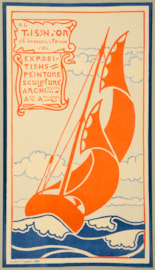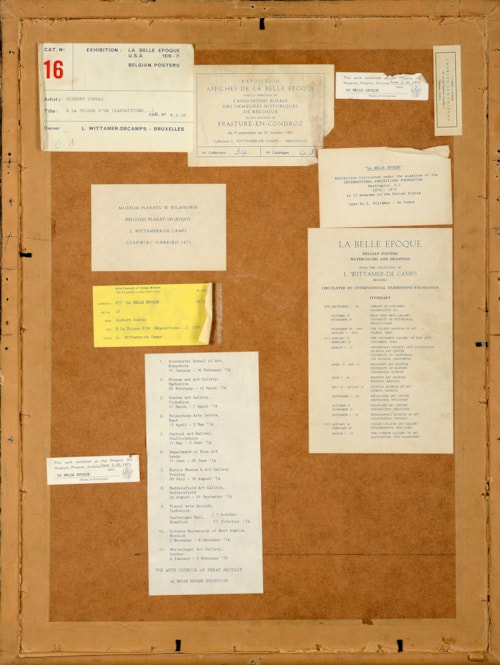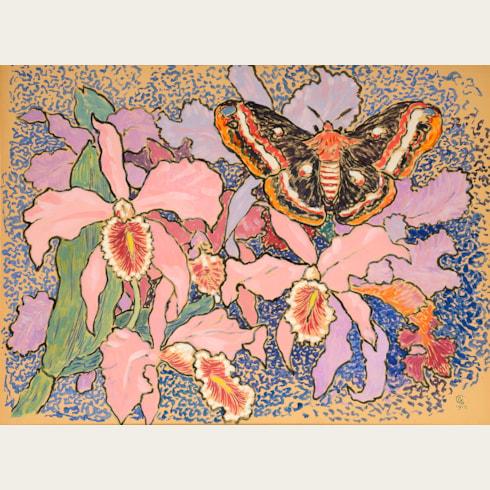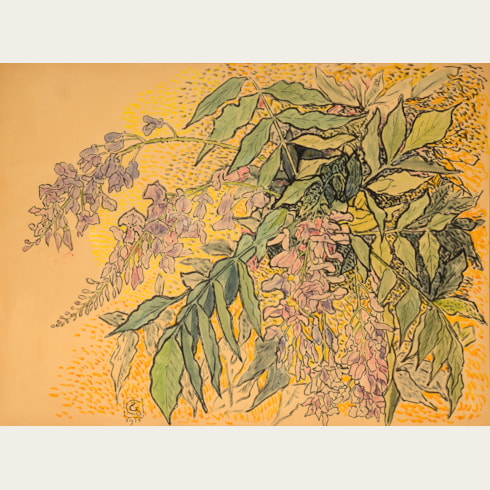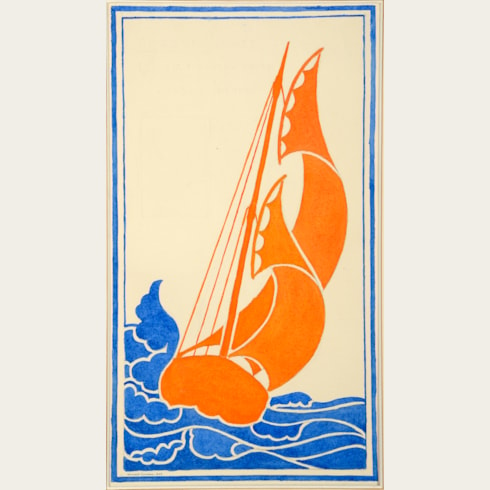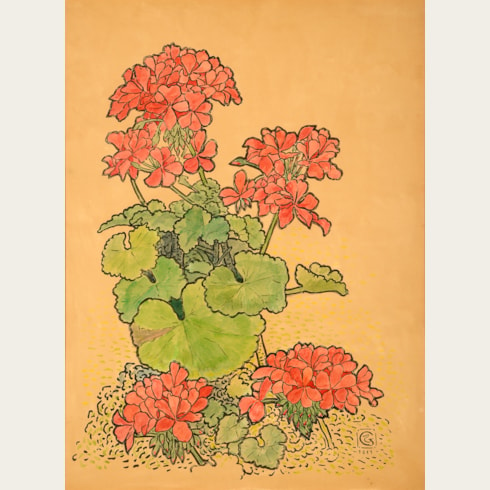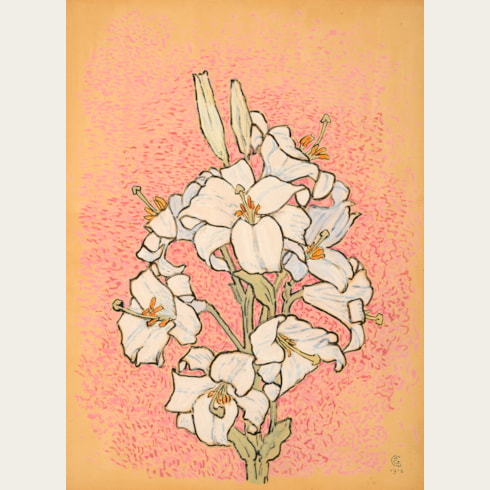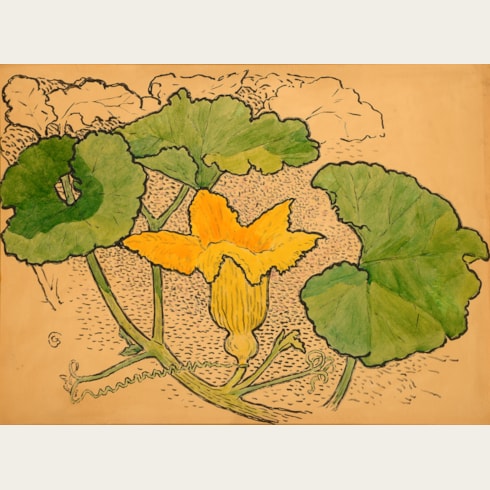Gisbert COMBAZ
(Antwerp 1869 - Saint-Gilles 1941)
À la Toison d’Or: Expositions Peinture, Sculpture, Architecture, Arts Appliques: Poster for La Maison d’art, Brussels
Signed and dated Gisbert Gombaz. 1895. in the lower left margin.
Inscribed AFFICHE POUR LA MAISON D’ART / LITHOGRAPHIE ORIGINALE / EN COULEURS on the mount.
395 x 225 mm. (15 1/2 x 8 7/8 in.) [sight]
421 x 256 mm. (16 5/8 x 10 1/8 in.) [sheet]
In 1895 the young Combaz received a commission to create a new poster for a new gallery, La Maison d’art, at 56, Avenue de la Toison d’Or in Brussels. As Jane Block writes, ‘Combaz, taking inspiration from the gallery’s location on the Avenue de la Toison d’or (“the Golden Fleece”), depicted the sea-faring Argo, the ship carrying Jason and the Argonauts on their quest for the golden fleece, sailing into the distance...By suppressing this text while increasing the abstract qualities of the final poster, Combaz heightened the graphic intensity. The decorative pattern of the double concave orange sails plays against the convex crest of the waves. The interrupted orange inner border at the lower right corner and lower left side adds a sense of kinetic energy which resonates in the billowy sails, movement of the waves, and even the sinuous curves holding the text. The result is a quintessential example of the new poster art, expressing its message with a remarkable economy of means.’
A significantly larger version of the poster, printed on three sheets, was printed in Liège in 1896. With green and grey tones added to the blue and orange of the earlier version, this 1896 poster also adds the name of the boat, Argo.
A later, similar design for a poster for La Maison d’art, also depicting a boat at sea but different in composition, was printed in a variety of inks on different coloured papers. This was one of the first works by Combaz acquired by a public collection in Belgium, when it was bought from the 1897 exhibition of La Libre Esthétique by the Baron de Haulleville, director of the Musée des Arts Décoratifs et Industriels.
Impressions of the present poster are today in the collections of the Bibliothèque Royale de Belgique in Brussels and the Musée Communal d’Ixelles in Ixelles, as well as the Jane Voorhees Zimmerli Art Museum at Rutgers University in New Jersey.
As one scholar has noted, In all, Combaz ‘created or designed some twenty-seven posters, several of which stand as icons of fin de siècle art…[they] reveal his mastery of the medium through use of bold colors and contours…His overall concern for legibility and clarity of message is paramount in all his works. The beauty of the compositions reside in his perfect choice of colors, tone, and his simplification of the composition.’
The leading Belgian Art Nouveau artist, Gisbert Combaz began his career as a lawyer, but in 1893 abandoned the legal profession to devote himself to art. He studied briefly at the Royale Académie des Beaux-Arts in Brussels before leaving in search of a teaching position to finance his new career as an artist. His first post was at the Institute Agricole in Gembloux, where between 1895 and 1900 he instructed students of engineering, chemistry and agriculture in drawing. Much influenced by the work of the Belgian artistic and literary group known as Les XX, Combaz exhibited with the group’s successor, La Libre Esthétique from 1897 onwards, and designed many of its exhibition posters. Known mainly for his poster designs and postcards, he was also active as a painter, lithographer, illustrator and furniture designer, and was a leading scholar of Oriental art. Yet although he exhibited between 1897 and 1914 at La Libre Esthétique, and also with L’Estampe, Combaz was never given a one-man show during his career, and only one brief article about his work was published in his lifetime. For over forty years Combaz taught decorative composition at the Ecole des Arts Industriels et Décoratifs in Ixelles, and later at the Académie des Beaux-Arts in Brussels, where among his pupils was René Magritte.
Provenance
Literature
Exhibition

